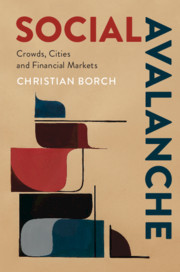4 - Cities
Published online by Cambridge University Press: 18 January 2020
Summary
This chapter examines cities and urban life from the perspective of social avalanches and tensional individuality. I discuss the ways in which contemporary sociologists and other commentators on nineteenth-century urbanisation saw modern cities as constituting the optimal habitat for the emergence and rapid diffusion of contagious ideas. Several argued that in the metropolis one’s immunity against corrupt ideas is constantly weakened, paving the way for contagion dynamics that could escalate into social avalanches carrying urban inhabitants away in collective frenzy. I also show how sociologists examined metropolitan life as wedded to a notion of tensional individuality: in the city, the individual is at once exposed to a bombardment of external mimetic forces which threaten to undermine individuality and is characterised by an anti-mimetic core which works to counteract such external influences. Finally, the chapter argues that many of the concerns that sociologists expressed concerning late-nineteenth and early twentieth-century cities were shared by architects and urban planners at the time. Their contemplations led to a series of design proposals: suggestions for urban planning believed to eliminate the problem of social avalanching in cities and minimise the mimetic component of urban individuality.
Keywords
- Type
- Chapter
- Information
- Social AvalancheCrowds, Cities and Financial Markets, pp. 144 - 187Publisher: Cambridge University PressPrint publication year: 2020

